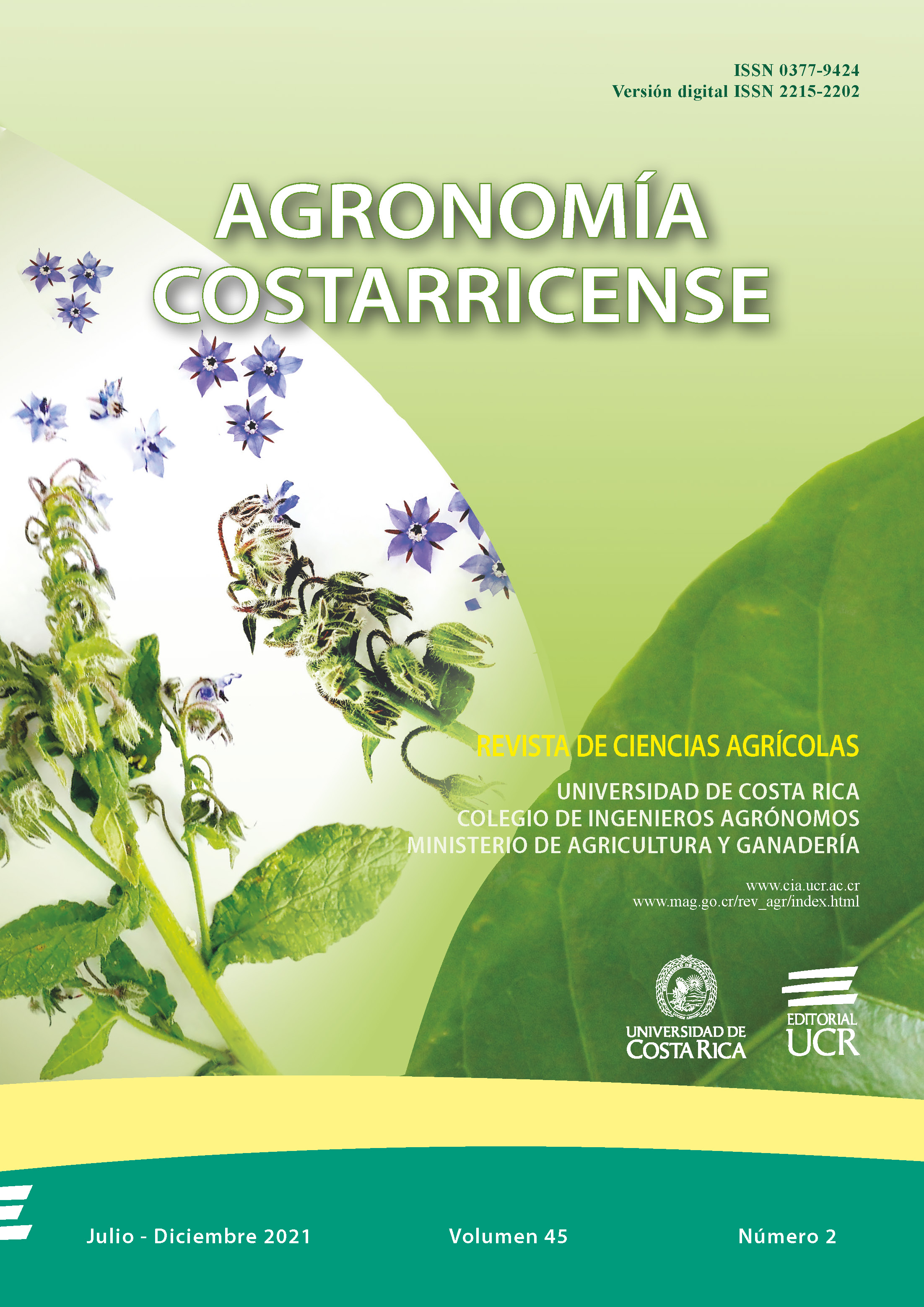Abstract
Introduction. Meloidogyne is a genus of phytoparasitic nematodes of agricultural importance worldwide. The correct diagnosis must include the use of different identification tools, since it represents many species. Objective. To morphologically and molecularly identify a Meloidogyne population associated with a papaya (Carica papaya L.) plot in Costa Rica. Materials and methods. In April 2015, in Pococi-Limon, galls were detected in the radical system of a papaya plantation. Plant material with root galls were collected, and females, egg masses and juveniles (J2) of Meloidogyne sp. were extracted. Perineal patterns of females were examined as well as their taxonomy. Juvenile stages were morphologically and molecularly identified by RFLP-PCR. An intergenic region of the mitochondrial genome (COII/16S) was amplified with primers C2F3 and 1108 and 1.7 kb PCR products were generated. Results. PCR products subject to endonuclease digestion generated three fragments of 1000, 460 and 250 bp with AluI, five fragments of 660, 600, 150, 105 and 85 bp with the DraI enzyme and there was no cut of the PCR product with the HinfI enzyme, it was 1.7 bp. The use of these techniques allowed the characterization of Meloidogyne javanica associated with the radical system of the crop. Conclusion. The correct identification of a nematode species is essential to prevent its spread to other sites where it is not yet present and it is a relevant aspect to know which of these species are associated with a certain crop, in order to define control strategies.


